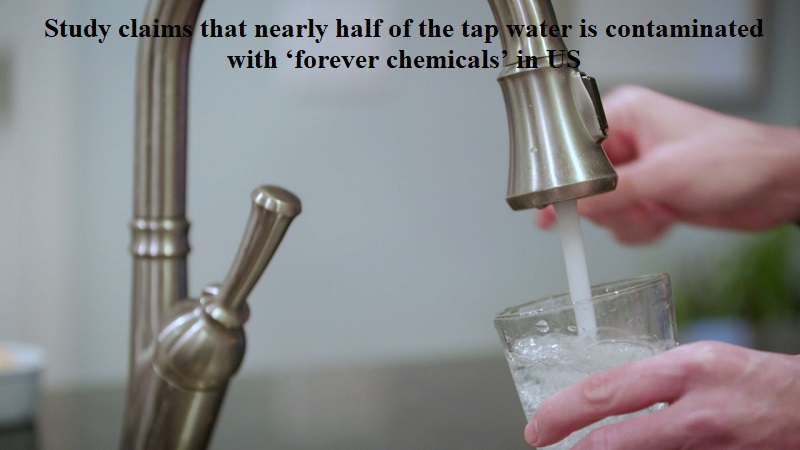
A recent government study has revealed that nearly 50% of tap water in the United States is contaminated by one or more “forever chemicals” known as per- and polyfluorinated alkyl substances (PFAS), which have been linked to health issues such as cancer and infertility.
According to the US Geological Survey (USGS), the country’s largest water, earth, and biological science agency, approximately 45% of tap water in the US has been affected by PFAS contamination. However, the current testing methods can only detect 32 types of PFAS out of the more than 12,000 that exist worldwide.
The contamination is most prevalent in locations and cities near potential sources of PFAS, which can be found in a wide range of everyday products including non-stick cookware, takeout containers, and fire-fighting foam.
Dr. Jamie DeWitt, a professor of pharmacology and toxicology at East Carolina University, explained that scientists have found PFAS in almost every location they have examined. The study identified that the most affected regions include central and southern parts of California, the Great Plains, the Great Lakes, and the Eastern Seaboard. The USGS estimates that there is a 75% probability of PFAS being present in tap water in rural areas, and a 25% probability in urban areas.
The US Environmental Protection Agency (EPA) has stated that exposure to certain levels of PFAS may lead to increased high blood pressure, reduced fertility in pregnant women, developmental effects in children, and an increased risk of certain cancers such as prostate, kidney, and testicular cancers. PFAS chemicals are known as “forever chemicals” because of their persistent nature in the environment.
Dr. Graham Peaslee, a professor in the Department of Physics and Astronomy, emphasized the challenges associated with addressing PFAS contamination, stating that it is a costly and recurring problem without a permanent solution for individual utilities. He expressed concerns about the significant expense associated with cleaning up PFAS contamination and referred to it as one of the most expensive environmental problems society will face, aside from global warming.
Peaslee added, “There’s nothing that will magically fix it. It’s fairly expensive to clean this up. And it’s a recurring cost, and there’s no permanent solutions to it for any particular utility. It looks frightening.”

Post Your Comments